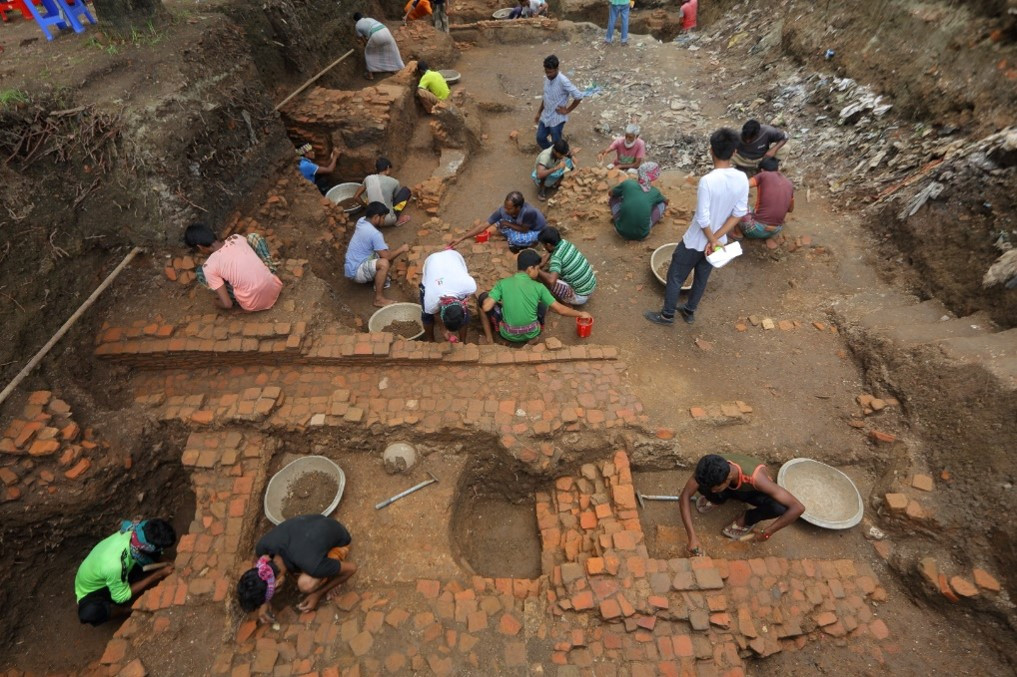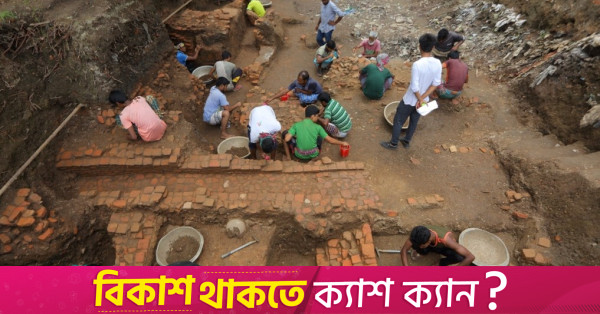
Dhaka, the capital of Bangladesh, as we have known, was founded in 1610 by Islam Khan, a Mughal Subahdar appointed to the Bengal region. He moved the capital from Rajmahal to Dhaka in 1608, renaming it Jahangirnagar, but was delayed in his arrival by two years due to a fight against Musa Khan.
Later, Dhaka was named the capital of the region four more times, in 1660 by Mir Jumla, in 1905 during the partition of Bengal, in 1947 during the Indo-Pak partition and finally after 1971's Liberation War of Bangladesh.
But now, a new archaeological exploration in Old Dhaka's central jail suggests that Dhaka was the capital of the region even before these periods, at least twice. This brand new finding was unveiled in a public lecture, titled "Archaeological Excavation at the central jail in Old Dhaka: An Analysis of Dhaka's Origins", at the Asiatic Society auditorium.
The discovery suggests that Dhaka has been a hub for local and international business for almost 2,500 years, not just 400 years as the previous history books have told us.
The beginning of the excavation
The discovery is not quite 'new' in the typical sense — the exploration kicked off back in 2016-17. After the central jail was transferred from Old Dhaka's Nazimuddin Road to Keraniganj, the Security Service Division under the Ministry of Home Affairs launched a project named "Ensuring the optimal utilisation of unused and abandoned land in Old Dhaka's central jail."Dr Sufi Mostafizur Rahman, a professor of the Archaeology Department of Jahangirnagar University, and his team were called in for the excavation.
"After Islam Khan's arrival in Dhaka, he lived in a fort. Many local historians stated this fort to be a Mughal fort," said Professor Sufi.
"But one of Khan's admirals, Mirza Nathan, wrote a book named 'Baharistan-i-Ghaybi' [The garden of the invisible], in which he mentioned that there was already a fort in Dhaka. If the fort was already there even before Islam Khan's arrival, how can that be a Mughal fort?" the professor added.
Most of the area within the jail premises was covered with concrete or other post-British structures. After archaeological surveys, 11 spots were selected for excavation.
What did archaeologists find?
Almost all the excavated spots contain bricks that were used for walls and flooring. The newfound bricks are vastly different from the modern ones — both in size and design.To estimate the age of the artefacts from the fort, five different samples of charcoal were tested in the Beta Analytic Testing Laboratory in the US. The results from 'absolute dating' (a process of determining the precise age of an artefact using carbon dating technology) show that the earliest samples are from 1430s CE, meaning the fort was there for almost 200 years prior to the Mughals' arrival in Dhaka.
Other artefacts found on the site include cowry, coins, bangles, stones in different shapes, porcelains, terracotta and pottery etc.
"An important find from the site is colourful 'glazed pottery', the same ones that were found in Wari-Bateshwar and Mahasthangarh. These pottery resemble the ones found in the United Arab Emirates indicating the Sasanian period, in Mumbai and Vellore indicating the early historic period," said the professor.

"'Rouletted pottery' is another significant discovery — as it was also found in Sri Lanka, India and in many archaeological sites in Southeast Asia. Finding a piece of that in Dhaka strongly suggests that Dhaka was linked to the international trade route, that is, the famous Silk Route," he added.
In earlier explorations in multiple sites including Wari-Bateshwar, Mahasthangarh and Tamluk, similar rouletted ware were found. Most archaeologists and historians agree that these pottery were imported in 200-100 BCE from the Mediterranean region.
Later, the artisans of the Indian region also learnt to make rouletted wares — although not as high quality as the Mediterranean imported ones.

"When you analyse the goods related to the Silk Route, their origin and the newfound imported glazed and rouletted potteries in Dhaka, it becomes evident that Dhaka too, was a part of the trade route," Professor Sufi said.
Thus, through the newly uncovered discovery, Professor Sufi claimed that Dhaka, now faded and stripped of its former glory, dates back nearly 2,500 years.
"For the first time ever, it has been claimed that there were human settlements and trade in Dhaka two and a half thousand years ago. This is also the first ever claim that Dhaka was connected to the Silk Route," the professor said.
The professor proposed that Dhaka served as the capital of the Bengal region at least twice before Islam Khan's arrival: once during the early historic era (approximately 600 BCE to 600 CE) and again in the 15th century.
Why was Dhaka chosen as the capital again and again?
According to the professor, the location and the climate of the region were the two key reasons behind Dhaka's being chosen as the capital and a hub of business."The geographical location of Dhaka is very unique and special — unlike any other city in the world. Although Dhaka is considered to be situated by the Buriganga, there were around 50 rivers and canals flowing through Dhaka," said the professor.
"Both local and international transportation was smooth from Dhaka. The cherry on top here was that this specific region is flood-free, which gave it an advantage over other regions like Chattogram," he explained further.
The soil of this region also played a crucial role, as the archaeologist explained, "The soil came in handy in making the walls of houses. On top of that, the easy access to wood from Madhupur made Dhaka an ideal choice for settlements."
But if the discovery is from 2016-17, why was this discovery not brought to light earlier?
Professor Sufi alleged that Dhaka University professor and historian Muntassir Mamoon, who was a member of the now-defunct committee, influenced the jail authority and the ministry so that the project wouldn't proceed further.
"There was a budget for further exploration in the site in the following fiscal year as well. But for no apparent reason, the project was shut down and I wasn't even allowed to present my findings," said Professor Sufi.
Upon reaching out, denying the allegations, Professor Mamoon said, "The halt of the excavation project was the committee's decision. I did not interfere or influence the decision of the committee. I was just a member of the committee."
"The then inspector general of police (IGP) was head of the committee, the jail authority might know why the project was held back," he added.
Dr Sufi expressed his willingness to explore the project further. "I think there is more to explore. There are still many artefacts that reveal more information about our past. If the ministry calls me again, we will explore further.
"If we can explore the project further, we might get new information about our glorious history that we are unaware of. Similar to how the Rosetta Stone unfolded the unknown history of Egypt, the glazed and rouletted pottery can be the same for Dhaka," he added.

Dhaka’s buried past: Archaeological excavation unveils new history
New findings from Old Dhaka’s central jail excavation show that the city was likely a capital of the Bengal region long before Islam Khan’s 17th-century arrival, a discovery that reshapes the story of its past

